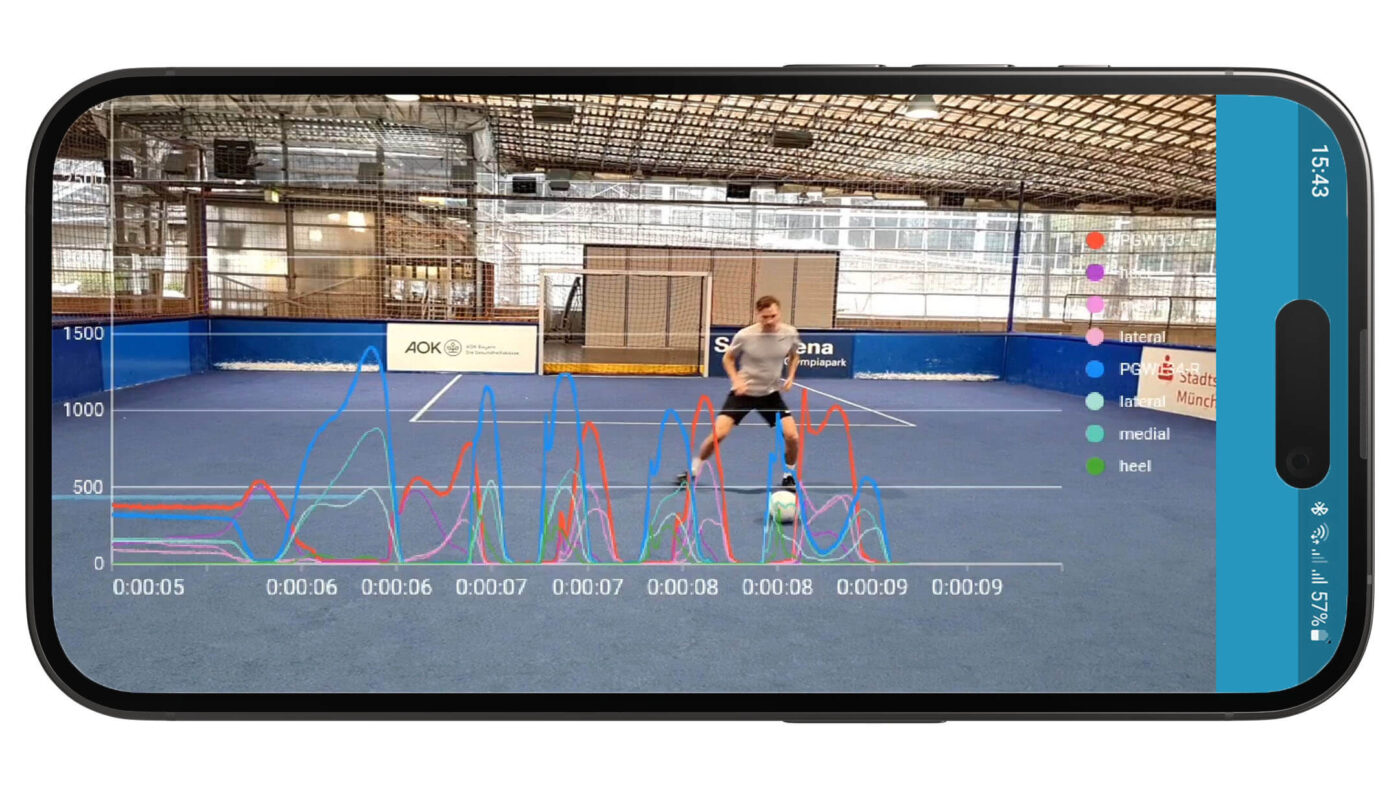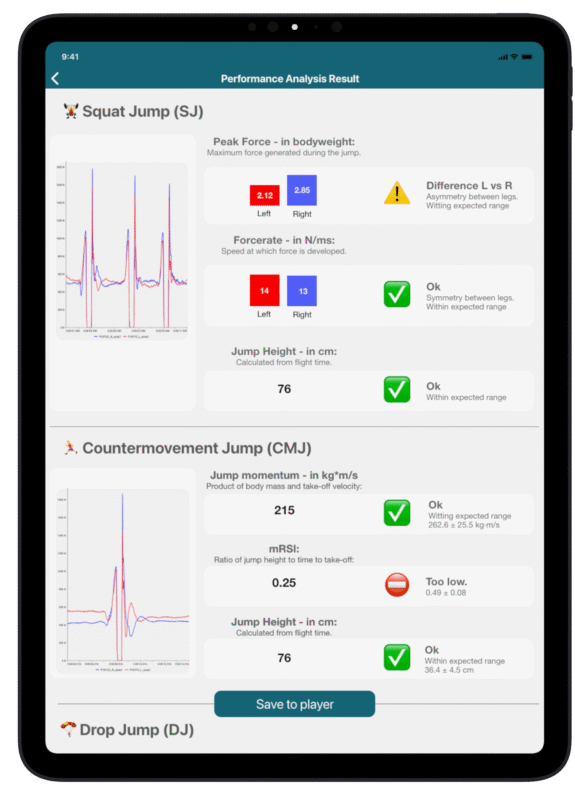Performance Diagnostics
A Tool for Performance Optimization and Injury Management

Why foot performance diagnostic test is a new trend?
Football involves typical movement patterns, such as jumps, changes of direction, acceleration, and stopping movements. Foot performance diagnostics are used to display real-time dynamic load on a player’s feet using standardized testing procedures. Performance managers maintain separate profiles for each player to compare data and utilize it effectively.
Foot performance diagnostics are also valuable in injury cases, as they document the rehabilitation process and help estimate when a player is ready to handle the same load as before the injury by referencing the player’s profile and recorded data. Recently, sports scientists and medical teams at some UCL clubs start to research on how this data can help prevent injuries such as ACL tears or other knee problems.
How to test your player in less than 5 minutes:
loadsol can be used to assess load-based parameters during various walking and running tasks. It has the potential to be utilized in the assessment and tracking of various clinical populations recovering from injuries and surgeries. loadsol could also be employed in clinical settings to assess changes in load parameters, track recovery, and restore symmetric loading following a variety of surgical and nonsurgical interventions. Additionally, it can be used when instructing subjects to maintain a partial weight-bearing protocol after surgery by setting load thresholds within the mobile application, which can alert subjects when they are placing more load on the foot than recommended during recovery.(reference article)
Performance Analysis Dashboard 👉
loadsol helps detect imbalances or deficiencies that could signal injury risk or track recovery progress through real-time monitoring of key parameters such as peak force, forcerate, jump momentum, and leg symmetry or your own test. This data-driven approach enables coaches and therapists to assess athletes both before injury and during rehabilitation, supporting informed and safe return-to-play decisions based on objective performance indicators.
Design and Perform Your Own Tests:
loadsol offers unparalleled flexibility for sports scientists, doctors, and trainers to conduct performance diagnostics and create custom tests in any location — whether in the lab or on the field. Easy to set up in less than a minute, loadsol enables regular assessments in various environments, enhancing the ability to monitor and optimize athletic performance efficiently

Some foot performance diagnosis tests for football:
Single Leg Drop Jump (Left & Right)
The single-leg variation allows for symmetry comparisons between the legs, which yield valuable information about injury recovery after, e.g. an ACL tear.
Drop Jump
Using drop jump tests, you get insights into your athletes‘ reactive power and their fatigue status with parameters such as the reactive strength index (RSI).
Counter Movement Jump
The counter movement jump is a staple performance test in any practitioner’s repertoire. Without any setup, quickly measure parameters to track the training progress of the athlete and their explosive power in particular: Peak power, peak force, jump height, rate of force production.
Monitor their fatigue levels over the course of a training cycle by looking at the duration of the eccentric and concentric phases during the movement or the rate of force production.
Loading symmetry during the landing phase let you check in on the progress during injury recovery and identify potential risks for future injury.
Single leg Hop Test
While hop tests are a standard tool in injury rehabilitation testing, qualitative analysis and jump distance alone don’t show enough for a true assessments. Athletes can manipulate the outcome by jumping submaximally.
Force data reveals these masking strategies and shows the real differences between the limbs.
Cutting Movements Test
High-impact movements like cutting are a common part of most sports and a regular cause of injury. Measuring the mechanical load (i.e., propulsive and breaking forces) on the body during such movements allows for an evaluation of the the cutting technique to prevent injuries.
By measuring such forces in the field, e.g. during training sessions, you can even monitor and control the mechanical training load of the athlete.

